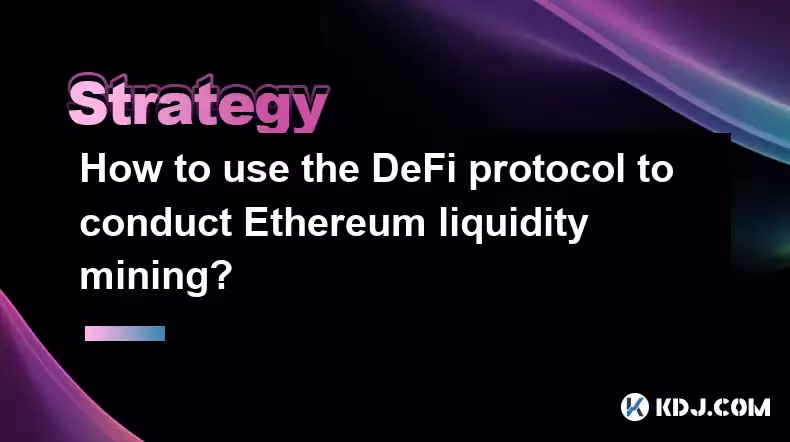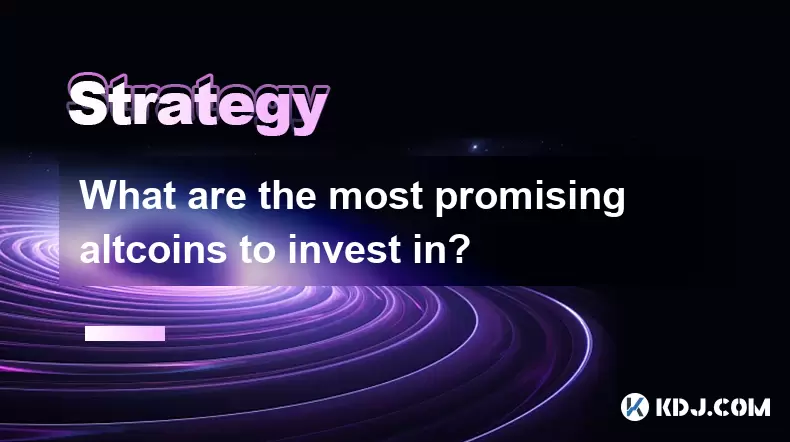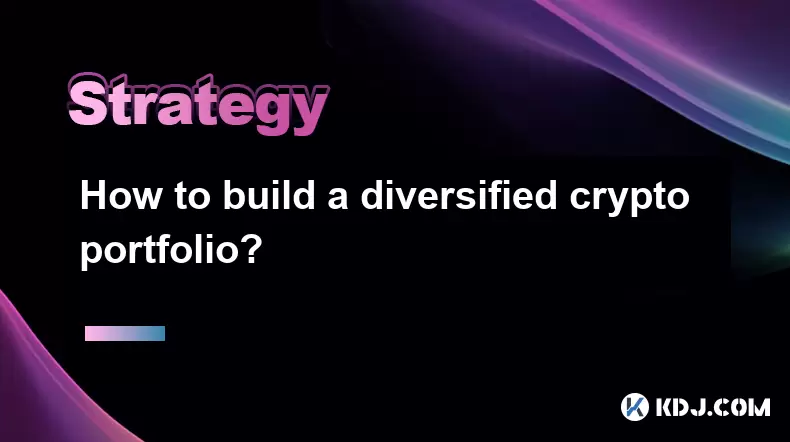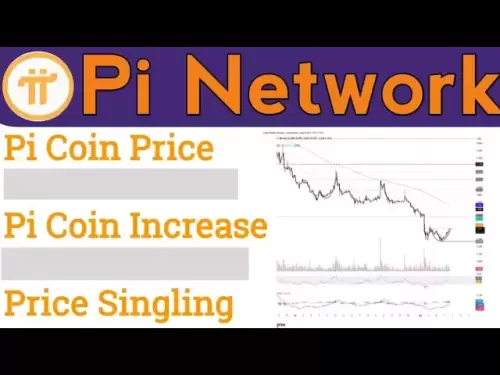-
 Bitcoin
Bitcoin $118300
1.01% -
 Ethereum
Ethereum $4215
0.69% -
 XRP
XRP $3.198
-3.83% -
 Tether USDt
Tether USDt $1.000
-0.01% -
 BNB
BNB $803.4
-0.53% -
 Solana
Solana $180.3
-0.67% -
 USDC
USDC $0.9998
-0.01% -
 Dogecoin
Dogecoin $0.2334
-1.49% -
 TRON
TRON $0.3394
0.86% -
 Cardano
Cardano $0.7980
-1.45% -
 Chainlink
Chainlink $22.19
6.65% -
 Hyperliquid
Hyperliquid $43.41
0.13% -
 Stellar
Stellar $0.4407
-3.13% -
 Sui
Sui $3.843
-2.24% -
 Bitcoin Cash
Bitcoin Cash $564.7
-3.74% -
 Hedera
Hedera $0.2588
-3.41% -
 Ethena USDe
Ethena USDe $1.001
0.00% -
 Avalanche
Avalanche $23.64
-3.37% -
 Litecoin
Litecoin $120.0
-4.01% -
 Toncoin
Toncoin $3.342
-1.11% -
 UNUS SED LEO
UNUS SED LEO $9.038
0.60% -
 Shiba Inu
Shiba Inu $0.00001347
-0.81% -
 Uniswap
Uniswap $10.69
-4.58% -
 Polkadot
Polkadot $4.034
-1.30% -
 Dai
Dai $1.000
0.01% -
 Bitget Token
Bitget Token $4.472
-1.52% -
 Cronos
Cronos $0.1571
-3.04% -
 Pepe
Pepe $0.00001207
-2.21% -
 Monero
Monero $273.8
-3.19% -
 Ethena
Ethena $0.7520
2.75%
How to use the DeFi protocol to conduct Ethereum liquidity mining?
Understanding the DeFi landscape: Decentralized Finance protocols offer innovative financial services on the blockchain, enabling peer-to-peer lending, borrowing, exchange, and yield farming opportunities.
Feb 25, 2025 at 10:30 pm

Key Points
- Understanding DeFi Protocols
- Liquidity Pools and Yield Farming
- Ethereum Liquidity Mining Strategies
- Choosing a DeFi Protocol
- Setting Up a DeFi Wallet
- Funding Your DeFi Wallet
- Providing Liquidity to a Pool
- Stake Your Liquidity Provider Tokens
- Monitoring Your Liquidity Mining Performance
- Withdrawing Your Liquidity and Earnings
Understanding DeFi Protocols
Decentralized Finance (DeFi) protocols are blockchain-based platforms that facilitate financial services without the need for intermediaries like banks or financial institutions. They offer a range of applications, including lending, borrowing, decentralized exchanges, and liquidity mining.
Liquidity Pools and Yield Farming
Liquidity pools are smart contracts that lock up crypto assets and allow users to trade against them, providing liquidity for decentralized exchanges. By depositing assets into a liquidity pool, users become liquidity providers (LPs) and earn rewards in the form of transaction fees or protocol tokens.
Yield farming involves maximizing returns on LP tokens by depositing them in protocols like yield aggregators or staking platforms that offer additional rewards for staking.
Ethereum Liquidity Mining Strategies
1. Uniswap: Uniswap is a decentralized exchange that has pioneered liquidity mining through the distribution of UNI tokens to LPs. Users can provide liquidity to various ETH-based pairs and earn rewards based on the trading volume and the amount of liquidity they contribute.
2. Sushiswap: Sushiswap is a fork of Uniswap that also offers liquidity mining incentives. It features SUSHI tokens that reward LPs for providing liquidity to specific pairs, including ETH-based ones.
3. Curve: Curve is a decentralized exchange specializing in stablecoin trading. It offers liquidity mining incentives for stablecoin pairs, providing rewards in the form of CRV tokens to LPs.
Choosing a DeFi Protocol
- Security: Consider the protocol's security measures, including audits and insurance policies provided by reputable entities.
- Liquidity: Check the size and depth of the liquidity pools for the desired ETH-based pairs to ensure sufficient liquidity and low spreads.
- Rewards: Compare the rewards offered by different protocols, including the type (e.g., tokens, fees, extra incentives) and the earning rate.
- Fees: Understand the transaction fees associated with depositing, withdrawing, and trading on the protocol.
Setting Up a DeFi Wallet
- Create a non-custodial cryptocurrency wallet like MetaMask or Trust Wallet.
- Connect the wallet to the chosen DeFi protocol.
Funding Your DeFi Wallet
- Send ETH or other supported assets to the wallet address provided by the DeFi protocol.
Providing Liquidity to a Pool
- Navigate to the liquidity pool for the desired ETH-based pair on the DeFi protocol.
- Deposit the desired amount of ETH and the corresponding token pair to become an LP.
Stake Your Liquidity Provider Tokens
- Stake your LP tokens on yield aggregators or staking platforms to earn additional rewards.
- Some DeFi protocols automatically stake LP tokens for users after providing liquidity.
Monitoring Your Liquidity Mining Performance
- Track the value of your LP tokens and the rewards you have earned over time.
- Monitor the trading volume and liquidity of the pool to ensure it remains profitable.
Withdrawing Your Liquidity and Earnings
- Withdraw your LP tokens from the liquidity pool whenever desired.
- Unstake LP tokens from yield aggregators or staking platforms.
- Convert LP tokens back to ETH and the corresponding token pair.
FAQs
Q: What are the risks involved in DeFi liquidity mining?
- Impermanent loss: Fluctuations in asset prices can lead to losses for LPs.
- Smart contract risks: Bugged or vulnerable smart contracts can result in loss of funds.
- Rug pulls: Malicious projects may abandon a protocol and take investor funds.
Q: How do I minimize the risks of DeFi liquidity mining?
- Due diligence: Research protocols thoroughly before investing.
- Diversify investments: Spread funds across multiple liquidity pools and protocols.
- Use a non-custodial wallet: Keep control of your private keys.
- Set stop-loss orders: Protect against extreme price fluctuations.
- Understand the smart contracts: Read and comprehend the code before interacting with it.
Q: How often should I monitor my liquidity mining performance?
- Regularly track the value of your LP tokens and rewards.
- Monitor the trading volume and liquidity of the pool periodically (e.g., daily or weekly).
- Adjust your strategy or withdraw funds if needed.
Disclaimer:info@kdj.com
The information provided is not trading advice. kdj.com does not assume any responsibility for any investments made based on the information provided in this article. Cryptocurrencies are highly volatile and it is highly recommended that you invest with caution after thorough research!
If you believe that the content used on this website infringes your copyright, please contact us immediately (info@kdj.com) and we will delete it promptly.
- Navigating the Week: Other Days, Days, and Your Schedule
- 2025-08-10 16:30:16
- DALPY's Presale Success Fuels CEX Listing Speculation: What's Next?
- 2025-08-10 16:30:16
- Crypto Gains, Strategy, and Millions: Decoding the Hottest Trends
- 2025-08-10 14:30:12
- Coinbase Dives into DEX Trading: A New Era for US Crypto Users (Except You, New York!)
- 2025-08-10 14:30:12
- Kaspa (KAS) Price Prediction: August 10th's Breakout Watch
- 2025-08-10 14:50:12
- Humanity Protocol Mainnet Launch: A New Era of Crypto Integration?
- 2025-08-10 14:50:12
Related knowledge

How to use stop-loss orders to limit potential losses?
Aug 08,2025 at 02:01pm
Understanding Stop-Loss Orders in Cryptocurrency TradingA stop-loss order is a risk management tool used by traders to automatically sell a cryptocurr...

What are the most promising altcoins to invest in?
Aug 10,2025 at 11:42am
Understanding the Role of Private Keys in Cryptocurrency WalletsIn the world of cryptocurrency, private keys are the cornerstone of ownership and cont...

How to read cryptocurrency charts and use technical analysis?
Aug 08,2025 at 11:08am
Understanding the Basics of Cryptocurrency ChartsCryptocurrency charts are graphical representations of price movements over time. These charts are es...

How to do your own research (DYOR) before investing in a crypto project?
Aug 08,2025 at 09:07pm
Understanding the Core Principles of DYOR in CryptocurrencyEngaging in due diligence before investing in any cryptocurrency project is essential to mi...

How to build a diversified crypto portfolio?
Aug 09,2025 at 12:21pm
Understanding the Importance of Diversification in CryptoDiversification in the cryptocurrency space is a strategy used to reduce risk by spreading in...

How to avoid common crypto investment mistakes?
Jul 13,2025 at 01:35am
Understanding the Risks of Crypto InvestmentInvesting in cryptocurrency can be highly rewarding, but it also comes with significant risks. One of the ...

How to use stop-loss orders to limit potential losses?
Aug 08,2025 at 02:01pm
Understanding Stop-Loss Orders in Cryptocurrency TradingA stop-loss order is a risk management tool used by traders to automatically sell a cryptocurr...

What are the most promising altcoins to invest in?
Aug 10,2025 at 11:42am
Understanding the Role of Private Keys in Cryptocurrency WalletsIn the world of cryptocurrency, private keys are the cornerstone of ownership and cont...

How to read cryptocurrency charts and use technical analysis?
Aug 08,2025 at 11:08am
Understanding the Basics of Cryptocurrency ChartsCryptocurrency charts are graphical representations of price movements over time. These charts are es...

How to do your own research (DYOR) before investing in a crypto project?
Aug 08,2025 at 09:07pm
Understanding the Core Principles of DYOR in CryptocurrencyEngaging in due diligence before investing in any cryptocurrency project is essential to mi...

How to build a diversified crypto portfolio?
Aug 09,2025 at 12:21pm
Understanding the Importance of Diversification in CryptoDiversification in the cryptocurrency space is a strategy used to reduce risk by spreading in...

How to avoid common crypto investment mistakes?
Jul 13,2025 at 01:35am
Understanding the Risks of Crypto InvestmentInvesting in cryptocurrency can be highly rewarding, but it also comes with significant risks. One of the ...
See all articles

























































































